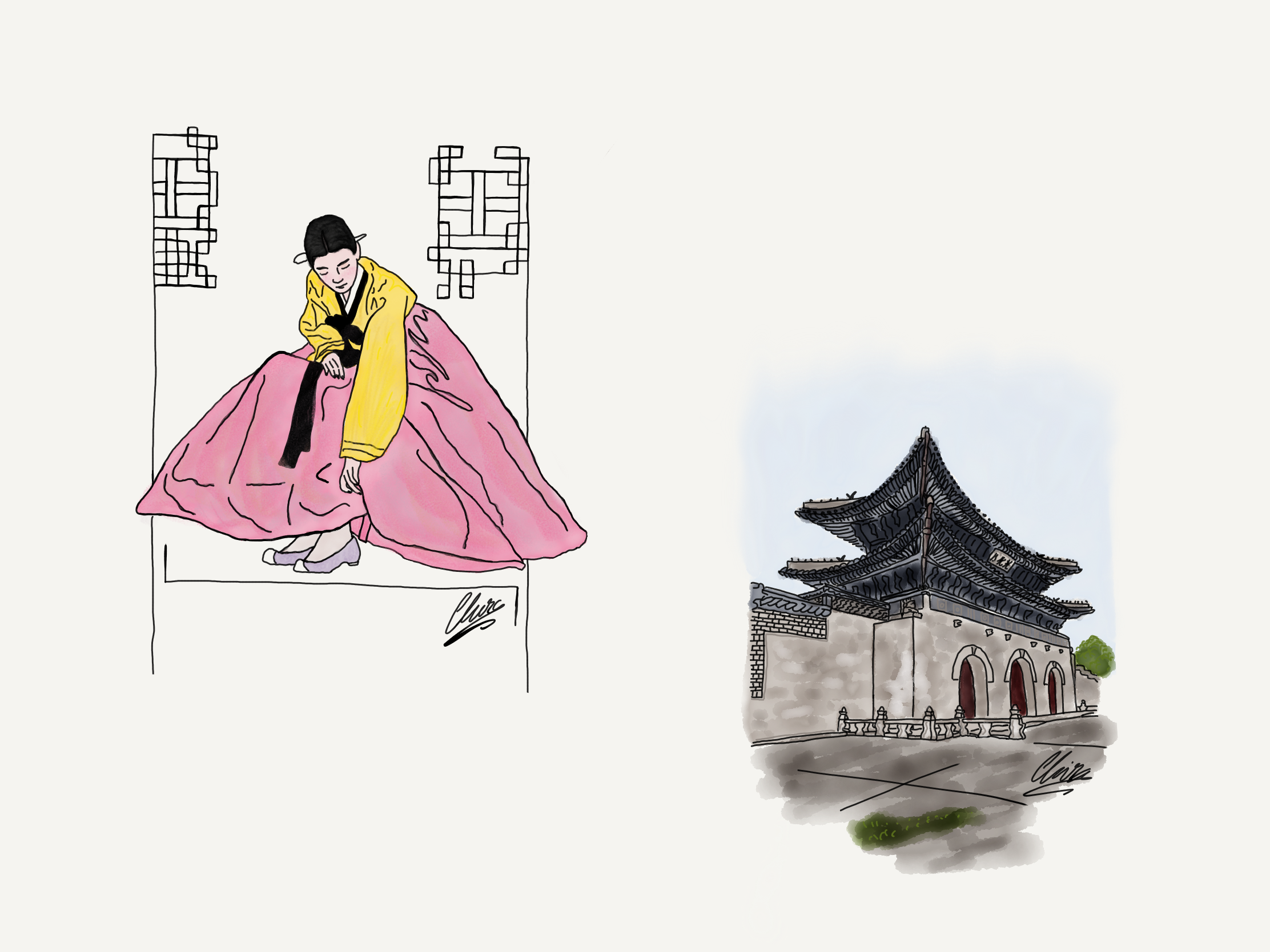By Helena Reinders
In a country known for its fast lifestyle and work ethic, a palace might not be the first thing people expect to see in the South Korean capital of Seoul. Although South Korea is a country rich in history and culture, these are often overlooked in global politics due to the country’s quick adaptation to the fast-paced Western world and its ideals. However, hidden throughout the country and its capital are traditional buildings and palaces; a reminder to citizens and foreign visitors of South Korea’s cultural roots. This article will focus on Gyeongbokgung (경복궁), a palace located in northern Seoul and the largest of its kind within the capital city.
After having fought a 475-year long war and with the fall of Goryeo, Korea was united into one nation under the name of Joseon in the summer of 1392. Gyeongbokgung was built in 1395 as the royal residency of the Joseon Dynasty. This dynasty maintained power from 1392 until 1910. At the beginning of his rule, King Yi Seong-Gye (ruled from 1392 to 1398), relocated the country’s capital from modern-day North Korea to modern-day Seoul. The palace itself was intentionally moved to the foot of Mount Baeksan to create Pungsu. Pungsu is a harmonic balance which the Koreans believed would bring prosperity and peace to not only oneself, but also one’s descendants. It is better known as Korea’s version of Feng shui, differing in that it also includes other specific ideas and rituals from Buddhism and Taoism. Relocating the palace to a location with this harmonic balance showed that the new king only had the country’s best interest at heart with the relocation. The most remarkable parts of the palace are the Gyeonghoeru Pavilion, the Hyangwonjeong Pond and the Gwanghwamun gate. It is also in this palace that King Sejong the great, the founder of Hangul (한글, the Korean writing system), ascended to the throne in 1418.
Over the course of the Joseon dynasty, the palace faced many threats and had to be rebuilt many times; most notably after the Japanese colonial invasion and the Civil War (1950-1953). During the Japanese invasion, from 1910 to 1945, about 90% of the palace and its grounds were dismantled or destroyed.
The main gate of the palace, the Gwanghwamun (광화문, drawn above by our illustrator Chira Tudoran) is, as mentioned previously, one of the most notable assets of the palace. Although the gate has withstood the Imjin war (1592-1598), it was deconstructed and moved during the Japanese invasion. It also got severely damaged during the Korean Civil War (1950-1953). In an effort to restore the Korean property damaged during these events, the gate was relocated during the 1960s, a few meters behind its original location. Additionally, the process of rebuilding the gate at this original location with authentic techniques and materials started in 2006. On the 15th of August 2010, the gate was restored and reopened to the public.
When I visited the palace in the summer of 2018, most of the palace and its grounds had been restored to their original state. Visitors can now come and enter the palace grounds for a small fee of 3000 Won, which is around €2, 25. Tours are given in multiple languages to educate people and share the Korean history and culture. Once a month, on Culture day, people can enter the palace grounds for free, and fees are also waived for anyone dressed in hanbok (한복, a traditional Korean clothing style, represented by our lovely illustrator Chira Tudoran). The palace illustrates not only Korea’s rich history and culture, but also the country’s perseverance and commitment to this history. After all that has happened to the palace, the Korean people never gave up on their heritage. This resulted in, amongst other things, the complete reconstruction of an impressive historical site.
If you ever find yourself in Seoul, a visit to the Gyeongbokgung palace is a must.
Sources
http://www.koreners.com/bbs/board.php?bo_table=blog&wr_id=1099&ckattempt=1
https://english.visitkorea.or.kr/enu/ATR/SI_EN_3_1_1_1.jsp?cid=264337
> Korea’s official site
Choi, J. (2010). The palace, the city and the past: Controversies surrounding the rebuilding of the Gyeongbok Palace in Seoul, 1990-2010. Planning Perspectives, 25(2), 193-213.
Kane, D. (2008). REBUILDING SEOUL’S BROKEN PALACE. Far Eastern Economic Review, 171(5), 77-79.
Jang, J. (2010). Gyeongbokgung : The primary Joseon palace. Koreana, 24, 8-15.
Edited by Amelie de Paepe
Artwork by Chira Tudoran

